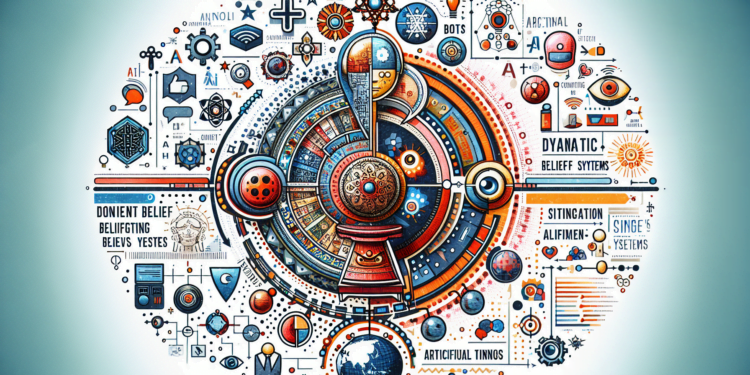The field of Artificial Intelligence (AI) continues its relentless march towards creating increasingly sophisticated and autonomous systems. One of the most fascinating areas in this journey is the study of Dynamic Belief Systems (DBS). These systems are essential for endowing machines with a model of understanding akin to human cognitions, allowing for more efficient adaptation and decision-making in changing environments. In this specialized article, we will explore key definitions, fundamental theoretical concepts, and recent advancements in the realm of DBS. Through relevant examples and case studies, we will examine how these systems enhance AI capabilities and their impact on future developments in the field.
Foundations of Dynamic Belief Systems
DBS are part of a broader spectrum of technologies that attempt to simulate the way humans update their beliefs in response to new information. Below are essential concepts in the study of Dynamic Belief Systems:
- Belief System: A structured set of assertions that represent the knowledge or information that an agent has about its environment or itself.
- Dynamic: Refers to the system’s ability to modify its beliefs in response to internal or external changes, maintaining internal coherence despite the presence of potentially contradictory information.
- Agent Model: In AI, agents are autonomous entities with the ability to perceive their environment and act upon it. DBS are employed to improve an agent’s response to unforeseen situations or for long-term planning.
Theories and Models
AI theorists and scientists have proposed multiple models for the functioning of DBS, such as:
- Doxastic Modal Logic: Based on the use of modal logics to formalize knowledge and beliefs. It allows reasoning about propositions and their degree of belief or doubt.
- Bayesian Networks: Allow modeling uncertainty and updating beliefs upon receiving new information, using probability theorems, like Bayes’ theorem, to compute and update beliefs.
- Belief Revision Systems: Mechanisms that define how beliefs should be changed or discarded in response to contradictory evidence, without generating logical inconsistencies.
Recent Advances and Applications
DBS have experienced significant advancements thanks to the integration of deep learning techniques and the use of large volumes of data for model training:
- Incremental Learning Algorithms: They develop and adjust predictive models on the fly, continuously learning from incoming data streams and optimizing their beliefs.
- Multi-Agent Systems: DBS in multi-agent environments enable interaction and belief updating among multiple agents, facilitating cooperation or competition based on individual or collective goals.
Impact on Industry and Research
The impact of DBS in the industry is multifaceted, with applications ranging from autonomous robotics, where DBS enable better adaptation to dynamic environments, to the development of personalized recommendation systems in e-commerce that adjust their suggestions based on the changing behavior and preferences of users.
In research, DBS are propelling advancements in areas such as automated planning, where they contribute to solving complex problems by adjusting their strategies in real-time, or in modeling artificial social systems to study decision-making in human contexts.
Challenges and Future Directions
Despite impressive advancements, DBS face challenges such as scalability, processing contradictory information, and the explainability of decisions made by AI. Looking ahead, it is crucial to explore how DBS can better incorporate emotional and ethical aspects of decision-making, aligning more closely with human reasoning.
Conclusion
Dynamic Belief Systems are a backbone in the effort to make AI more akin to their human counterparts in terms of adaptability and reasoning. The continuous refinement of these systems promises not only to transform the underlying technology in machines but also to offer advancements in how we interact with and benefit from Artificial Intelligence in our daily lives.






















